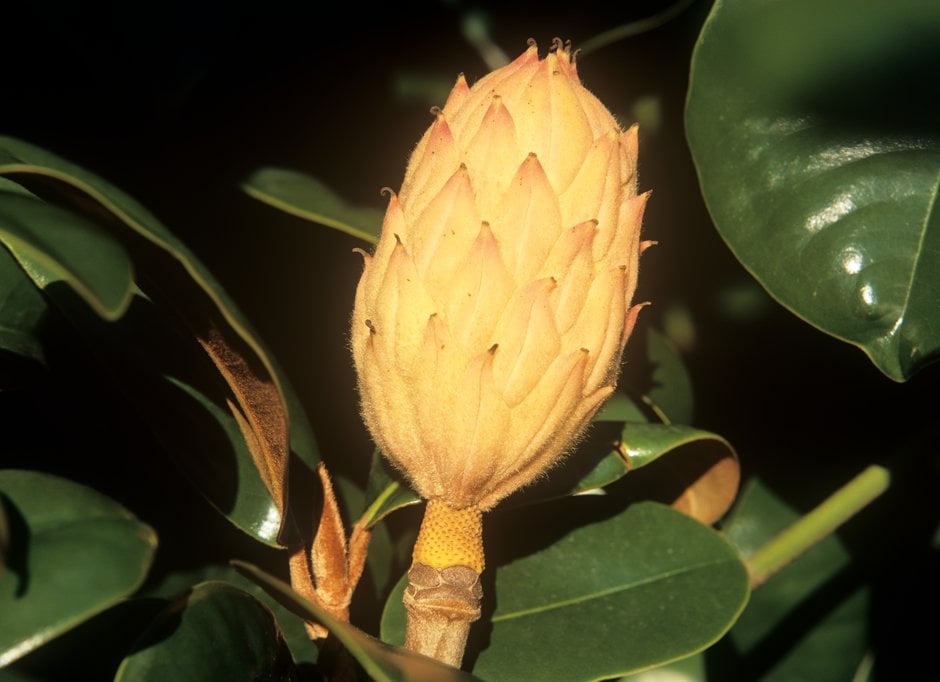Magnolia grandiflora
evergreen magnolia
A large, rounded evergreen tree about about 12m tall or more with glossy dark green, leathery, oblong-elliptic leaves, often rusty-brown beneath, and highly fragrant, cup-shaped, cream flowers to 25cm across in late summer and autumn
Other common names
bull baybullbay
see moregreat laurel-leaved magnolia
large-flowered magnolia
laurel magnolia
loblolly magnolia
southern magnolia
Synonyms
Magnolia obovata (W.T. Aiton) LinkSize
Ultimate height
Higher than 12 metresTime to ultimate height
20–50 yearsUltimate spread
Wider than 8 metresGrowing conditions
Moisture
Moist but well–drained, Well–drainedpH
Acid, Alkaline, NeutralColour & scent
| Stem | Flower | Foliage | Fruit | |
| Spring | Green | |||
|---|---|---|---|---|
| Summer | Cream White | Green | ||
| Autumn | Cream White | Green | ||
| Winter | Green |
Position
- Full sun
- Partial shade
Aspect
South–facing or West–facing or East–facing
Exposure
Sheltered Hardiness
H5Botanical details
- Family
- Magnoliaceae
- Native to GB / Ireland
- No
- Foliage
- Evergreen
- Habit
- Bushy
- Genus
Magnolia can be deciduous or evergreen trees or shrubs, with large, showy, often fragrant flowers, often opening before the leaves, and sometimes followed by colourful cone-like fruit
- Name status
Correct
- Plant range
- SE USA
How to grow
Cultivation
Grow in moist, well-drained preferably neutral to acid soil in sun or part shade. Tolerates dry, alkaline soil. See magnolia cultivation advice
Propagation
Propagate by semi-ripe cuttings from late summer to early autumn or layering in early spring
Suggested planting locations and garden types
- Architectural
- City and courtyard gardens
- Cottage and informal garden
- Mediterranean climate plants
- Low Maintenance
- Hedging and screens
- Wall side borders
Pruning
Pruning group 9 or pruning group 13 if wall-trained. See magnolia pruning
Pests
May be susceptible to scale insects, horse chestnut scale and capsid bug
Diseases
May be susceptible to coral spot, phytophthora, grey moulds, honey fungus, a virus or fungal leaf spot
Get involved
The Royal Horticultural Society is the UK’s leading gardening charity. We aim to enrich everyone’s life through plants, and make the UK a greener and more beautiful place.
